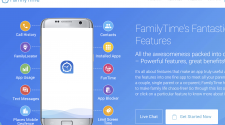If you have a talent for software development or mobile app writing, there are several trends that will be shaking up the industry in the coming year. If you aren’t familiar with them, you risk getting left behind and blown away by the competition. There are upwards of about 5 billion smartphones in use around the world, and there is no sign of the number decreasing. There is staying power and a literal dependency on mobile apps for lifestyles of all types. It a culture that offers things like location-based services, virtual reality, games, and mobile business operations. With improvements in mobile app error monitoring, using an app for a range of activities never seems to present a problem or cause an issue. In fact, usage is slated to increase in such a way that the app industry takes in almost $190 billion in revenue from global use. These trends are the future.
1. Artificial Intelligence and Machine Learning
Tech lovers everywhere have seen an increase in the use of AI and machine learning in the past years, and the future will bring a whole new set of changes. The demand for the services has grown as users are enjoying the benefits of chatbots and virtual assistants. The AI industry alone is set to earn over $40 billion by the end of next year. With the stellar performance and consumer approval of tech like Alexa and Siri, app developers will continue to invest in the AI and machine learning systems that have become second-nature to most consumers.
2. Wearable Tech Integration
The Apple watch was greeted by a bit of skepticism, but wearable tech has risen to new heights of popularity with devices like the Fitbit showing a positive side to tech influence. Wearable applications will blossom over the coming years, with devices expecting reach sales of around 900 million by the year 2021. These apps have the potential to alter how we interact each day, with a renewed focus on developing smartwatches and fitness trackers.
3. The Internet of Things
The interconnected network of smart gadgets has come to be known as the internet of things (IoT). Connecting your smartphone to your Fitbit is a prime example, but the network also contains other gadgets that operate with built-in software, special circuits, and unique sensors. These are nothing more than software appts that been designed for compatibility with mobile apps. The new reality will be increased connectivity with smart homes, continuous supply chain, and even health insurance. The increase in the demand for gadgets will require a vigorous new effort for applications that make them function.
4. Chatbot Prevalence
There is no denying that chatbots have become a significant part of digital reality. Over the next five years, the global market is expected to grow to over $1250 million U.S. dollars. Currently, chatbots have been acting like virtual assistants through mobile applications. Over the next few years, the role won’t change, but the way it is developed will. Using advancements in artificial intelligence, chatbots will be integrated within an app without a lot of extra intricate coding. A common application that is impacting the B2B economy is the use of chatbots for self-service customer relationship management. Chatbot features will continue to revolutionize a number of industries in the future.
5. Augmented and Virtual Reality
High-quality gaming application will continue to incorporate both virtual and augmented entertainment. Mobile devices are offering user breathtaking experiences, which rival the more established console versions that have been around for years. As more compatibility hardware enters the market, the more opportunity there will be.
Mobile apps have become an integral part of people’s lives. For those able to capitalize on the demand, there is a world of possibility that will continue to open in the days ahead.
![[Jcount.com]](https://www.jcount.com/wp-content/uploads/2014/08/jcount150X50.png)
![[Jcount.com]](https://www.jcount.com/wp-content/uploads/2014/08/jcountstartupslogo1.png)





